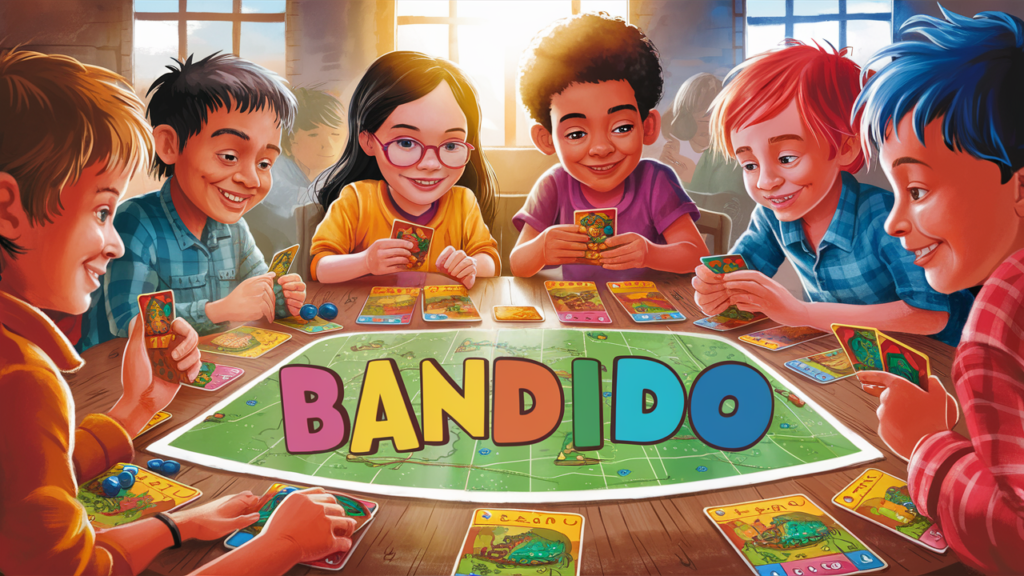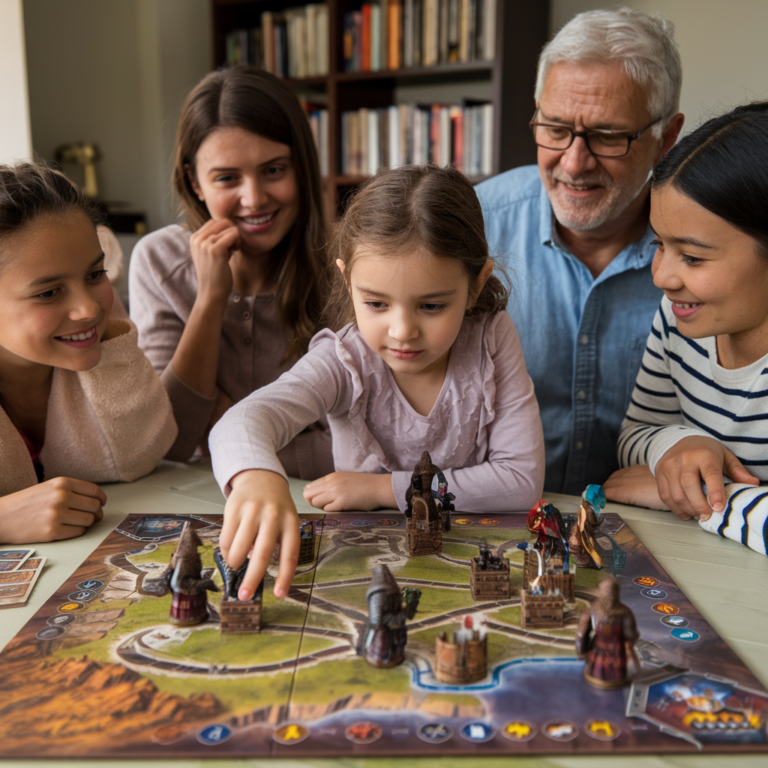Bandido for Kids: Where Fun Meets Learning and Strategic Thinking Takes Flight

Have you ever watched a kid light up when they solve a tricky puzzle or win a game? That’s exactly what happened in my house the first time we played Bandido. As a parent, I’m always on the lookout for games that are fun but also help kids grow smarter. Bandido turned out to be one of those rare gems! Let me tell you why this game is perfect for kids—and how it makes learning feel like play.
What Makes Bandido Stand Out for Kids?
Simple Rules, Big Fun
One of the best things about Bandido is how easy it is to learn. My daughter (who’s in elementary school) picked it up within minutes. The goal? Work together to stop the bandido—a sneaky character—from escaping through tunnels. It’s simple enough for younger kids but still exciting for older ones.
- Cooperative Play: Unlike competitive games where someone wins and someone loses, everyone works as a team in Bandido. This teaches kids important skills like teamwork and communication.
- Quick Setup: You can start playing in under five minutes—perfect for short attention spans!
The Power of Play: How Bandido Combines Fun and Learning
Learning Through Play
Kids don’t even realize they’re learning while playing Bandido because it feels so much like fun. But trust me, their brains are working hard behind the scenes! Here’s what happens during gameplay:
- Problem-Solving Skills: Every turn requires players to figure out which tile fits best to block the bandido. My daughter loves shouting, “I know where this goes!”
- Critical Thinking: Players must think ahead and predict what might happen next. For example, if you place a tunnel here, will it help the bandido escape later?
- Spatial Reasoning: Figuring out how tiles connect helps kids understand shapes and patterns better.
I remember one game where my daughter realized she had made a mistake halfway through. Instead of getting upset, she said, “Okay, let’s fix it!” That moment showed me how Bandido builds resilience along with problem-solving skills.
If you're considering Bandido as a tool for fun and learning, this review dives into whether it’s a must-have cooperative card game and why it’s worth adding to your collection. For families who love variety, this list of 10 board games like Sushi Go offers more options to keep the fun going. Additionally, if you’re curious how Bandido compares to other family-friendly games, this comparison of Bandido , Spaceteam , and Sushi Go provides valuable insights. Budget-conscious parents will also appreciate this guide to the best cheap cooperative board games that deliver great value. Once you’ve explored these resources, you can dive deeper into why Bandido is such a hit for family game nights with these tips on why it’s the perfect choice . Beginners can get started easily using this step-by-step guide on how to play Bandido , while those looking for quick games will love this post on why Bandido is great for short play sessions . Together, these resources help you make the most of Bandido while exploring other fantastic options for kids and families.
Strategic Thinking Takes Flight: Why It Matters for Kids
Why Strategic Thinking Is Important
Strategic thinking isn’t just for grown-ups—it’s super valuable for kids too! When kids practice planning and decision-making, they become better at solving real-life problems. Playing Bandomio gives them a safe space to experiment with strategies without any pressure.
For instance, after a few rounds of Bandido, my daughter started noticing patterns. She’d say things like, “If we put this tunnel here, we’ll trap him faster!” These small victories boosted her confidence and encouraged her to try harder challenges.
Experts agree that strategy-based games like Bandido help kids develop:
- Better focus
- Improved memory
- Stronger decision-making abilities
Why Parents and Educators Love Bandido
Perfect for Families And Classrooms
As a parent, I love how Bandido brings us closer together. We laugh, cheer, and sometimes groan when the bandido escapes—but it’s all part of the fun. Teachers also rave about using Bandido in classrooms because it encourages collaboration and keeps kids engaged.
Here’s what other parents and educators have shared:
- “My students beg to play Bandido every day!”
- “It’s amazing how much my child has improved at thinking ahead.”
And guess what? Even though it’s designed for kids, adults enjoy it too. I’ve caught myself strategizing way more than I expected!
Tips for Maximizing Learning with Bandido
Turn Gameplay Into a Learning Adventure
Want to get the most out of Bandido? Try these tips:
- Talk It Out: Encourage kids to explain their moves. This boosts verbal skills and helps them process their thoughts.
- Mix It Up: Add house rules to make the game more challenging. For example, limit the number of tiles each player can use.
- Pair It With Other Activities: Combine Bandido with puzzles or building blocks to reinforce similar skills.
After playing regularly, I noticed my daughter becoming more patient and thoughtful—not just in games but in everyday situations too. One day, she calmly figured out how to share her snacks equally with friends. That’s when I knew Bandido was doing its job!
Conclusion
Bandido isn’t just another board game—it’s a tool that combines fun, learning, and strategic thinking in a way that’s perfect for kids. Whether you’re a parent looking for quality family time or an educator seeking creative teaching tools, Bandido delivers.
So why wait? Bring Bandido into your home or classroom and watch your kids’ minds soar.
FAQs About Bandido for Kids
Is Bandido Suitable for Younger Kids?
Yes! While the recommended age is 6+, younger kids can join in with a little guidance.
How Long Does a Typical Game Last?
Games usually take 10–15 minutes—just right for keeping kids focused.
Can Bandido Be Played Solo?
Not really. It’s designed for 2–4 players, but you can adapt it by taking turns solo.






